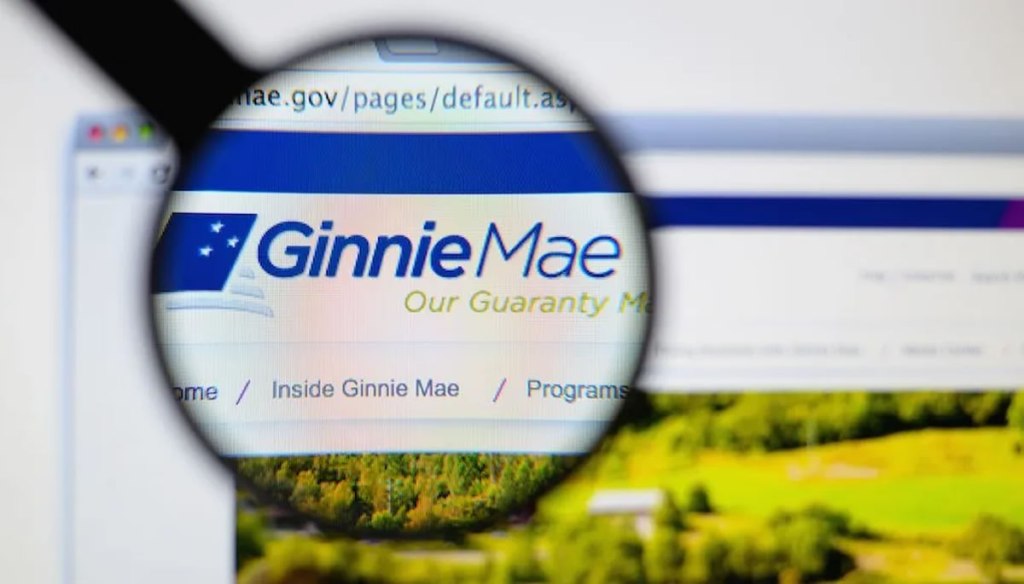Ginnie Mae intends to develop a new reverse mortgage-backed security product enabling the acquisition of loans from an HMBS pool above the existing 98% maximum claim amount (MCA) requirement, according to a new announcement.
Released on Tuesday morning, the move is a further attempt to address the well-documented liquidity challenges that have been plaguing the reverse mortgage business for most of the past year, stemming from the late 2022 bankruptcy of Reverse Mortgage Funding (RMF), the run-up in interest rates and a precipitous drop in loan volume.
Ginnie Mae on new product development, current HMBS program
“In light of continued liquidity constraints in the reverse mortgage sector, Ginnie Mae is exploring the viability of a new securitization product that would accept HECM loans with balances above 98 percent of FHA’s Maximum Claim Amount (MCA),” the announcement explained. “This new product will not change the requirements for the existing HMBS program, where HECM loans with balances at or above 98 percent MCA are required to be bought out of HMBS.”
When a HECM loan reaches 98% of its MCA, current rules stipulate that the issuer or investor must buy the loan out of its HMBS pool as a stability-ensuring measure for the broader HMBS program. By exploring a new product that would allow loans with a higher balance to be a part of a new securitization, Ginnie Mae is aiming to add more stability to the secondary reverse mortgage market.
In an accompanying statement, Ginnie Mae President Alanna McCargo makes clear that this potential new reverse mortgage security would be in addition to the current HMBS program and not a replacement for it.
“Ginnie Mae remains committed to the HMBS program, which supports an important tool that enables seniors to tap into their home equity,” she said. “This potential product exploration reflects our focus on current liquidity issues affecting the secondary mortgage market.”
HECM warrants special attention because of demographic trends, and the financial circumstances of older Americans.
“Given the growing population of older Americans that may need to rely on home equity for financial support, continued efforts to provide stability in the secondary market are crucial to the ongoing health and access to the FHA HECM product,” McCargo explained.
Industry response
The National Reverse Mortgage Lenders Association (NRMLA) lauded the announcement and Ginnie Mae itself for its response to current reverse mortgage industry liquidity challenges, according to a statement from NRMLA President Steve Irwin.
“NRMLA, and its members, are delighted by the news from GNMA that they will start exploring additional securitization products to expand and enhance the HMBS program,” Irwin said. “GNMA launched a couple of significant changes to its pooling requirements for the HMBS program in 2023, and I commend Ginnie’s continued attention to the HMBS program so as to further mitigate HMBS Issuer liquidity risk.”
Ginnie Mae has publicly commented in the past about the strain on its resources that its assumption of a large HMBS portfolio created, and Irwin commended the company for its attention to reverse mortgage issues despite those challenges.
“To have the leadership at GNMA devote its limited resources to continual HMBS program improvement underscores HUD’s dedication to the mission of the HECM program,” he said.
Recent Ginnie Mae/HMBS history
The HMBS program has been on the minds of people at Ginnie Mae more frequently following its seizure of RMF’s servicing portfolio in December 2022.
Last year, the company made important changes to the HMBS program including reducing the minimum size required to create HMBS pools to assist smaller issuers, while also changing certain pool eligibility requirements to ease some liquidity strain.
Last November, the HUD Office of the Inspector General (OIG) stated that the HMBS portfolio poses a “significant risk” to Ginnie Mae in 2024, largely due to the sensitivity of HECM loans to interest rates. The HUD OIG had also announced earlier that it was opening an inquiry into the extinguishment of RMF from the HMBS program, as the government aims to defend Ginnie Mae in a lawsuit from one of RMF’s former creditors.





